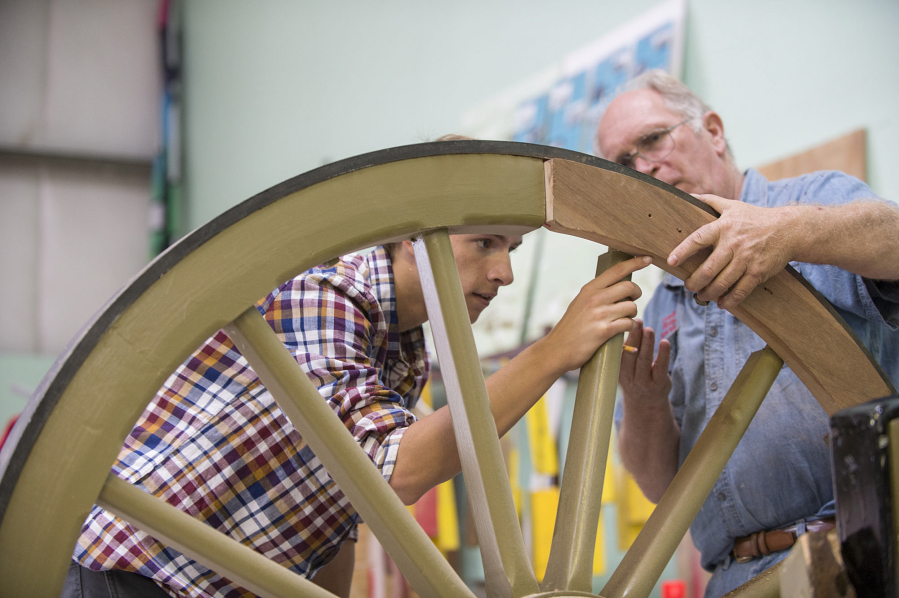John Keller put his shoulder to the wheel and went to work, using a hammer and chisel to dig decayed wood out of that wheel.
The Vancouver teen is restoring one of the replica cannons that have marked the west entrance to Vancouver’s Officers Row since 1991.
The past 25 years have taken their toll on the pair of Napoleon 12-pounders, built by students at Mountain View High School as a class project. Now Keller is restoring one of them as his Eagle Scout project.
“I thought it would be awesome to put a cannon together. I don’t think I knew what I was getting into,” Keller said a few days ago.
The project required removing the steel barrel, which weighs 400 pounds, according to a stone monument on the plaza where the cannons were installed.
Then Keller and mentor Fred Munhoven took the wooden gun carriage apart so they could replace rotted components with newly fabricated parts. They also refinished the cannon’s rusted metal fittings in their workshop, a Pearson Field hangar used by the National Trust for storage.
“It’s fun, but intimidating. We had no real plans for putting it together,” said Keller, a senior at Portland’s Jesuit High School.
“We took a lot of photos” during the disassembly process, he said.
The 17-year-old Scout’s partner in the project is Munhoven, who has a historic preservation business. A former employee of the Fort Vancouver Historic Trust, Munhoven worked on a lot of local landmarks, including Providence Academy and the old Vancouver Barracks hospital building.
“My favorite is the Marshall House,” Munhoven said, calling it the best example of preservation he’s worked on. “It’s the same as the moment it was built.”
According to the stone monument north of the O.O. Howard House, each 4 1/2 -foot-tall wheel of the cannon was assembled from 35 pieces of red oak. Removing the steel tire and disassembling the wheel was out of the question, Munhoven said, so each replacement part had to be fitted into the existing wheel.
During a recent workshop session, Keller and Munhoven replaced one of the curved pieces of wood that gives the wheel its round shape. After Keller used a hammer and chisel to remove the old piece, called a felloe, they sanded down the replacement part to fit the open spot.
While Munhoven was there to provide hands-on instruction, he said that Keller had other tasks — including getting local businesses to donate materials.
Keller is a member of Troop 648, based at St. Andrew Lutheran Church in Orchards. Keller and Munhoven hope the restoration can be done in time for Troop 648 to roll the cannon onto a trailer and display it Nov. 5 during the annual Veterans Parade at Fort Vancouver.




